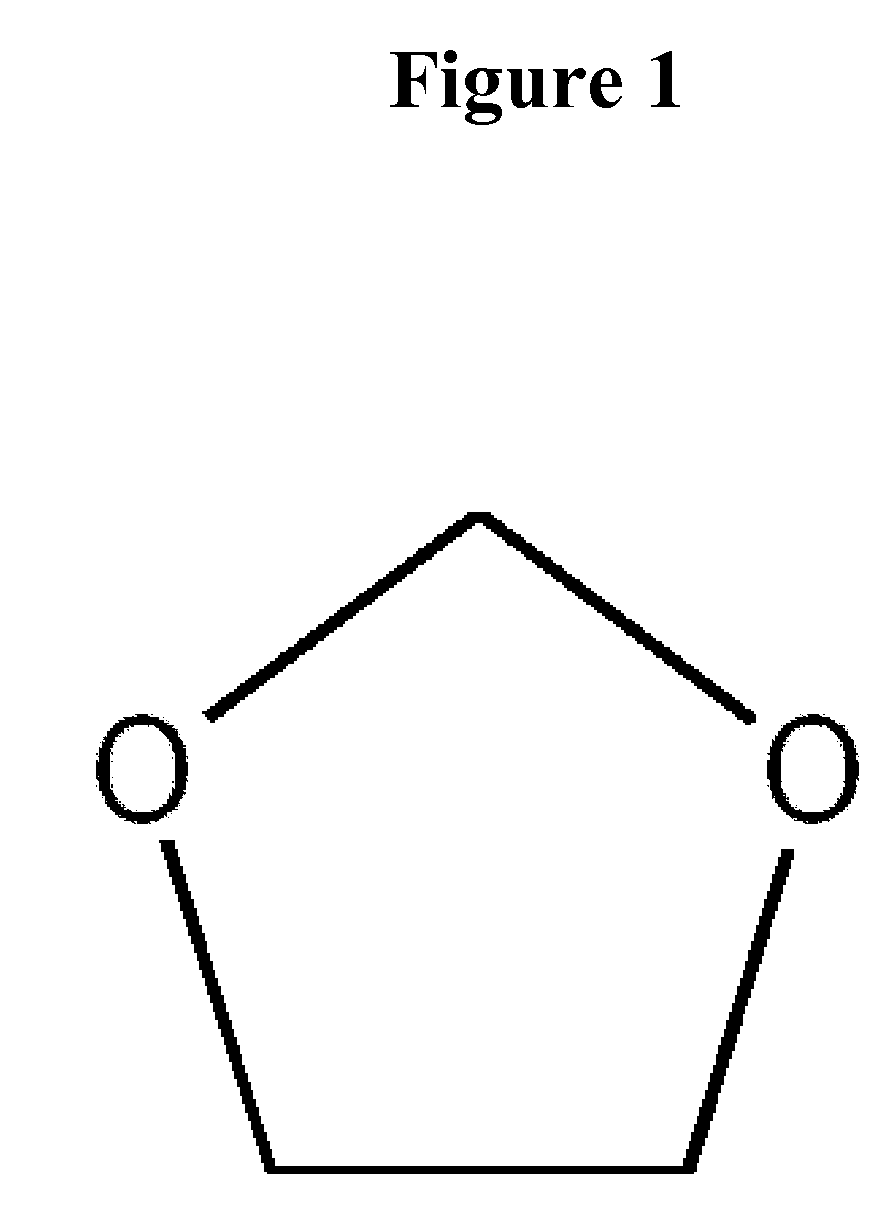Methods for the separation of biological molecules using dioxolane
a technology of dioxolane and biological molecules, applied in the field of biological molecules separation and purification, can solve the problems of time-consuming and expensive, unhealthy for users, and lower yield of isolated nucleic acids, and achieve the effects of reducing organic solvent extraction, high yield and high quality
- Summary
- Abstract
- Description
- Claims
- Application Information
AI Technical Summary
Benefits of technology
Problems solved by technology
Method used
Image
Examples
example 1
Effect of Dioxolane on Purification of RNA from Jurkat Cells
[0048]RNA was isolated from a Jurkat cell line using the following protocol. Cultured cells (2×107) were collected in a centrifuge tube and washed with PBS buffer (GIBCO formulation). The cells were resuspended in 10 ml of PBS and passed through two Whatman glass fiber GF / D filters (47 mm diameter each) to capture the cells. The filters were washed with 20 ml of PBS to further reduce contaminants. Nine ml of White Blood Cell (WBC) Lysis Solution (4 M guanidine thiocyanate, 1% Triton X-100, 0.05% sarkosyl, 0.01% Antifoam A, 0.7% beta-mercaptoethanol) was passed through the filters resulting in the release of nucleic acids from the cells and the lysate was collected. The lysate comprised RNA as the main biological material. The genomic DNA was retained on the GF / D filters and could be physically and / or chemically retrieved later. Four ml of water was passed through the GF / D filters to release any additional RNA that was trapp...
example 2
Purification of RNA from White Blood Cells
[0055]The standard protocols for purification of RNA from white blood cells is described in this example. RNA is purified from white blood cells using a modification of the protocol described in Example 1. Five milliliters of blood, collected in a vacutainer tube with EDTA anticoagulant, is mixed with 20 ml Red Cell Lysis Solution (0.15 M ammonium chloride, 0.001 M potassium bicarbonate, 0.0001 M EDTA, pH 7.2-7.4) and incubated at room temperature for 5 minutes. White blood cells are collected by centrifugation and processed starting at the PBS buffer step as described in Example 1. Analysis of the RNA can be performed by UV spectrophotometry to show RNA yield and purity. Agilent Bioanalyzer traces and Quantitative Real Time PCR (QRT-PCR) of the purified RNA can be used to show the quality of nucleic acid.
[0056]RNA from white blood cells can also be isolated using the Stratagene Absolutely RNA® kit, which employs spin cups comprising a silic...
example 3
Purification of RNA From Whole Blood
[0057]The standard protocol for purification of RNA from whole blood is described in this example. Five ml of whole blood is added to 20 ml of Red Blood Cell (RBC) Lysis Solution (0.15 M ammonium chloride, 0.001 M potassium bicarbonate, 0.0001 M EDTA, pH 7.2-7.4). The sample is mixed and incubated for 5 minutes at room temperature. The resulting RBC lysate is passed through two 47 mm diameter GF / D filters to capture white blood cells and allow most plasma proteins and RBC contaminants to flow through the filters. The filters are washed with 20 ml of RBC Lysis Solution to further reduce contaminants. Nine ml WBC Lysis Solution (4 M guanidine thiocyanate, 1% Triton X-100, 0.05% sarkosyl, 0.01% Antifoam A, 0.7% beta-mercaptoethanol) is passed through the filters to release nucleic acids from the white blood cells, and the resulting lysate is collected comprising mostly RNA. Genomic DNA is retained on the GF / D filters and can be physically and / or chem...
PUM
| Property | Measurement | Unit |
|---|---|---|
| pore size | aaaaa | aaaaa |
| pore size | aaaaa | aaaaa |
| diameter | aaaaa | aaaaa |
Abstract
Description
Claims
Application Information
 Login to View More
Login to View More - R&D
- Intellectual Property
- Life Sciences
- Materials
- Tech Scout
- Unparalleled Data Quality
- Higher Quality Content
- 60% Fewer Hallucinations
Browse by: Latest US Patents, China's latest patents, Technical Efficacy Thesaurus, Application Domain, Technology Topic, Popular Technical Reports.
© 2025 PatSnap. All rights reserved.Legal|Privacy policy|Modern Slavery Act Transparency Statement|Sitemap|About US| Contact US: help@patsnap.com



